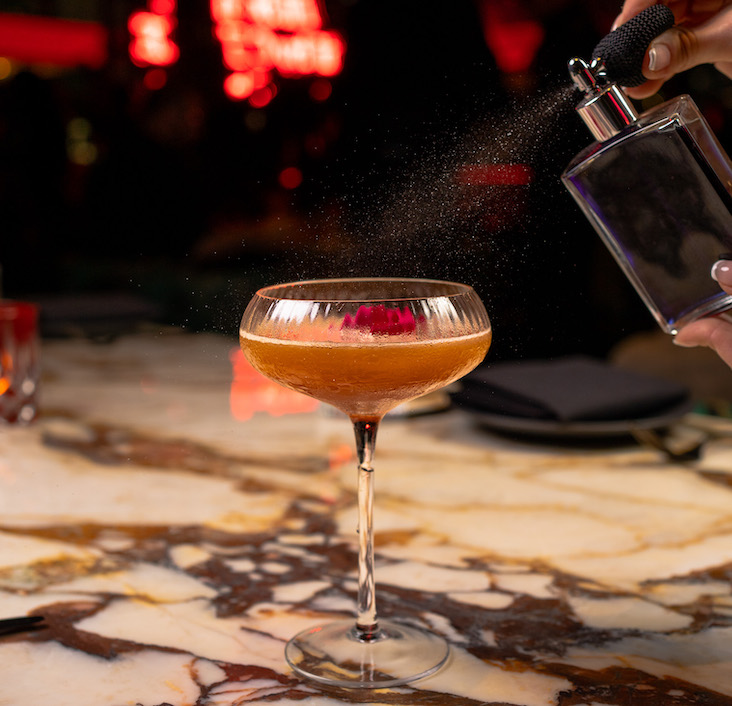There are many moments of truth in the hospitality business, but anyone involved in the beverage side will tell you that none is more important than the one when the server asks the guest who is ordering a drink to present their identification.
“The rubber meets the road at the bar or table. All it takes is one server not to card someone or not realize the ID was fake and we can wind up in front of the liquor board arguing as to why we shouldn’t be shut down for two weeks,” says Tim Kirkland, manager of bar and beverage development and front-of-house training at Rock Bottom Restaurants, based in Louisville, Colo. “It all comes down to that one server and that one moment.”
The ID check can be one of the trickiest guest interactions, but when handled properly, it ensures responsible service of beverage alcohol, compliance with state and local regulations and protects the bar or restaurant from potential violations, litigation and even loss of the liquor license. In some municipalities, it also protects the server from exposure to liability. With so much riding on that one interaction, why is it so difficult to get it right?
One reason is the ease with which good quality fake IDs can be created or obtained today. The Internet has emerged as the primary source of fraudulent IDs or manufacturing equipment. “The machines that most departments of motor vehicles use to print driver’s licenses can be bought on the Internet today for about $1,500,” says Adam Chafetz, president of Health Communications, which markets the TIPS responsible service training program. “Those folks then turn around and sell the fake IDs over the Internet.”
In fact, the incidence of driver’s licenses that have been altered—the laminate cut and lifted so dates or names or photos can be replaced or changed— appears to be declining. Servers and bartenders today are being presented with fake IDs that are pristine and even include security features such as holograms in the laminate. “It’s easier and easier to make or buy IDs, and these things look good,” asserts Tony Garcia, senior manager of beverage R&D at Briad Main Street Restaurant Group, based in Phoenix, Ariz.
HIGH-TECH CHECKING
Many operators are fighting technology with technology. At five T.G.I. Friday’s locations operated by Briad Main Street, handheld ID scanning devices from CardCom are used to verify the age of patrons entering after 10 p.m.
The devices take the encoded data on the license— units can decipher elements such as bar codes and even holograms—decodes it and displays the birth date and other relevant data, including whether the individual is of legal age to consume alcohol. “This verifies age as well as the validity of the ID,” says Ashley Lee at Buena Park, Calif.-based CardCom Technology. The displayed data is then verified against the information on the face of the card; some devices can record all IDs being scanned, enabling documentation of ID checks.
“If the ID is rejected, we don’t allow them in after 10 p.m. If it’s earlier, and they’re headed for the dining room, we designate theirs a dry table and no one can be served,” says Garcia. “If it’s a real ID, but not theirs—maybe the photo on front of the card doesn’t match the individual presenting it— we ask for a second form of ID.”
Since implementing the scanners four years ago, Garcia says the number of restaurants dubbed “hot spots” for underage patrons has gone from 12 to five. “The word got out that we’re on it,” he says.
A similar system is in place at Dave & Buster’s locations, the chain of 44 gaming and entertainment venues based in Dallas, Texas. Unaccompanied minors are not permitted in after 8 p.m., and some locations use scanners to verify IDs. Legal-age guests are issued wrist bands that allow them to purchase beverage alcohol. The cost of such systems is a concern, according to Peter Czizek, vice president of food and beverage; Dave & Buster’s continues to test age verification technologies, with an eye on effectiveness and cost efficiency.
POS systems can also provide a technical assist. “Born on or before” dates are printed on checks at Houlihan’s restaurants, displaying a ready reminder for servers of what birthdates to be aware of when checking IDs. “Our servers don’t have to do the math in their heads,” says Dave Brown, director of beverage at the Leawood, Kan.-based chain of 85 locations.
Briad Main Street’s Garcia envisions a system involving handheld devices that can scan IDs at the table or bar and synch to the POS system so a notation goes on the service ticket that the age is verified. “It could prompt the server to request the ID when the drink is ordered and remind them that the drink order won’t go through until the ID is swiped,” he says.
POLICIES & PROCEDURES
As with most technologies, these systems and devices are only as good as the people using them. The human factor is the most important element in the age validation process, but for most operators, it’s also the most challenging.
“The issue boils down to two things: a lot of establishments don’t have clear policies with regard to carding guests and servers are not being trained properly,” says Clay Hosh, director of content implementation and delivery at the National Restaurant Association Educational Foundation (NRAEF), which offers the ServSafe Alcohol curriculum. “The training process has to begin with the fact that the ID checking interaction can be a very uncomfortable one, especially for a young server.”
“We drill into these kids that the guest is always right and then we turn around and essentially tell them to question the guest,” says Rock Bottom’s Kirkland.
Clearly communicating the establishment’s policies on asking for proper identification—including the reasons for this policy, such as the liability of the company and possibly the server—is step number one, according to Hosh. The second step, and most operators agree with its import, is comprehensive training.
Identification verification warrants an entire chapter in the recently re-vamped ServSafe Alcohol program, driven by requests from NRAEF’s advisory board, according to Hosh. It’s also a major component of the TIPS training curriculum. Both involve scripts and role-playing to make servers comfortable with the entire process. “You have to neutralize an experience in which the server may have to essentially tell the guest that they don’t think they’re being truthful. Role-playing and practice is key,” notes Hosh.
“For our younger servers, who are typically the most uncomfortable checking IDs, we tell them they don’t have to play policeman,” says Briad Main Street’s Garcia. “If they’re not comfortable because they’ve asked for ID and are being hassled by the guest or being challenged, go get the manager. That’s why the manager is there.”
FRONT-LINE FOCUS
Once the policies, training and comfort level are in place, many operators close the loop with mystery shopper programs or internal audits. EcoSure, an on-premise audit service provided by EcoLab, includes reporting on whether a server or bartender requested ID when taking a drink order. Being a Responsible Server, or BARS, a Denver-based firm, focuses exclusively on that moment of truth, with instant, on-the-spot feedback.
“We send 21-to 25-year-olds into client locations twice a month to perform a mock purchase of alcohol. They go through the steps of ordering a drink to see if the bartender or server is doing their job and asking for ID for guests under 30 or whatever the company policy is for visual assessment,” says David Gaudet, president of BARS.
Those servers who request and then verify the ID are presented with a green card; those failing to do so are given a red card. Managers are immediately brought into the interaction in both cases. “This is one way to see if the training is making it into the restaurant. These companies have policies and training, and they’re policing themselves. They can incentivize or take corrective action on the spot.”
Rock Bottom Restaurants rewards units with perfect shops in a particular time period with parties or other perks; red cards lead to disciplinary action. The first red card earns the server a verbal or written reprimand, the second a review of the training program. “Also, if a store or region is getting more red cards than the others, we’d want to see how the training is working in that store because something’s obviously broken,” says Kirkland.
Other operators are reaching out into the community to address the underage issue. Fake IDs is not much of a problem at Bardenay Restaurant & Distillery in Boise, Idaho; the distillery restaurant attracts a somewhat sophisticated crowd.
“But the problems at a place a half a block away were causing issues for my business,” relates owner Kevin Settles, who says incidents involving minors and alcohol caused local authorities to raise an eyebrow at the sale of beverage alcohol on the Bardenay patio. “So, I got to work on the issue.”
Settles became involved in a coalition called Enforce Underage Drinking Laws. “Rather than looking at it as a youth issue, we’re looking at it in terms of youth and overservice—we found establishments that tend to sell to underage patrons also tend to overserve.”
The coalition is pushing for mandatory server training for all bartenders and servers in the city of Boise, with a goal of having every server hold a current TIPS or ServSafe Alcohol certification card, says Settles. “Our hope is that this sparks a statewide mandate, which would ensure greater safety and also be easier to administer.”
Aggressive policies, training and operator willingness to be a part of the solution can go a long way toward thwarting on-premise sales to underage guests. The bottom line is that servers must be on board.
“All these laws and regulations are important, but the real key is that these people, our servers and bartenders, want to do the right thing, which they do,” says TIPS’ Chafetz. “We need to make sure we give them the tools to do it.”




